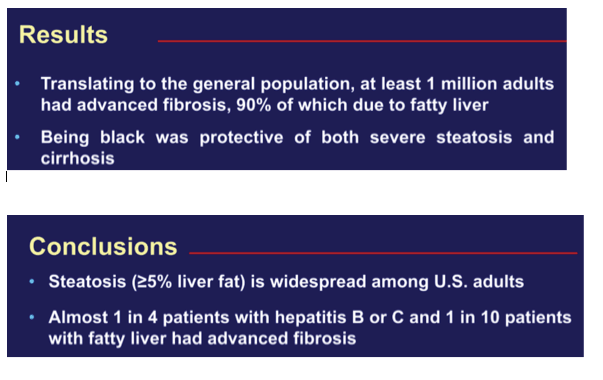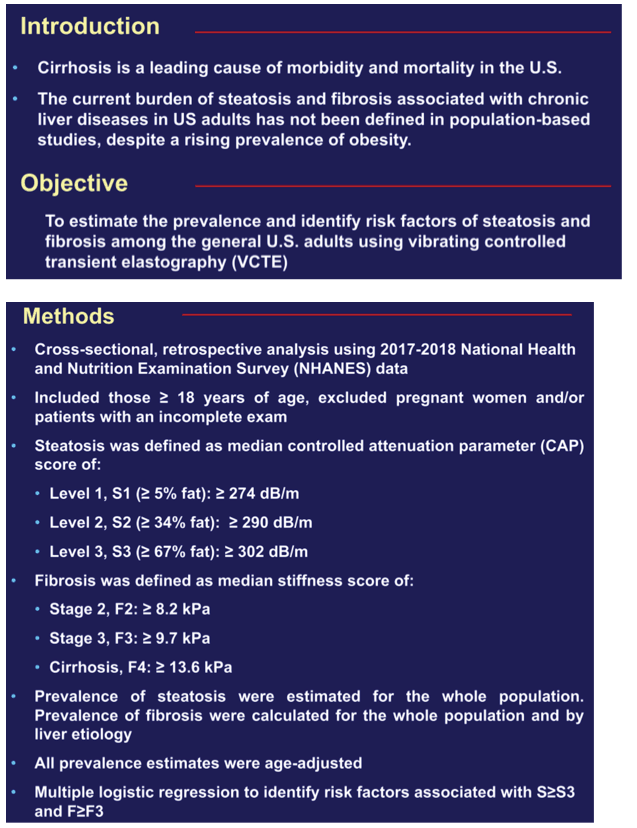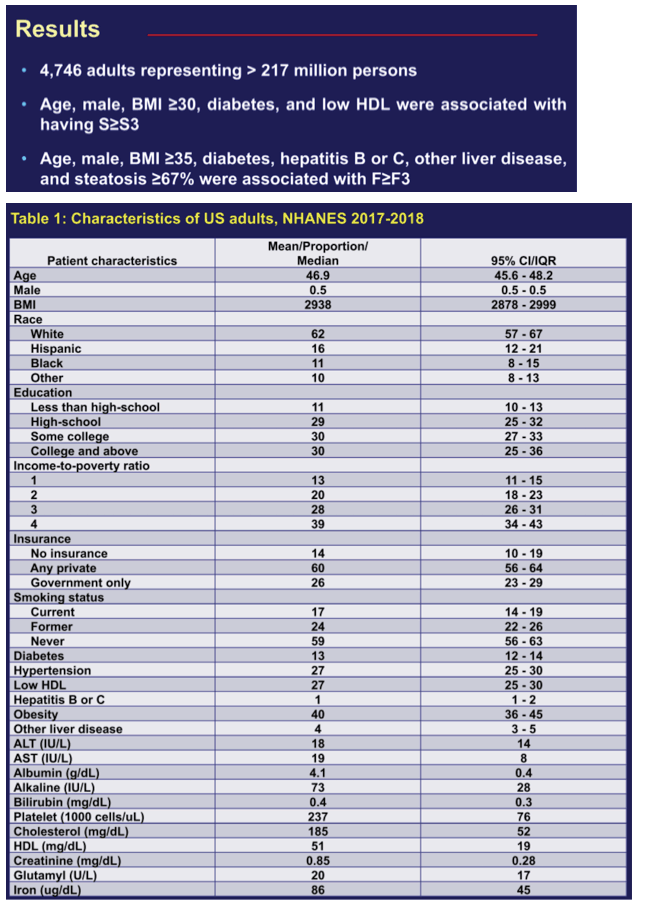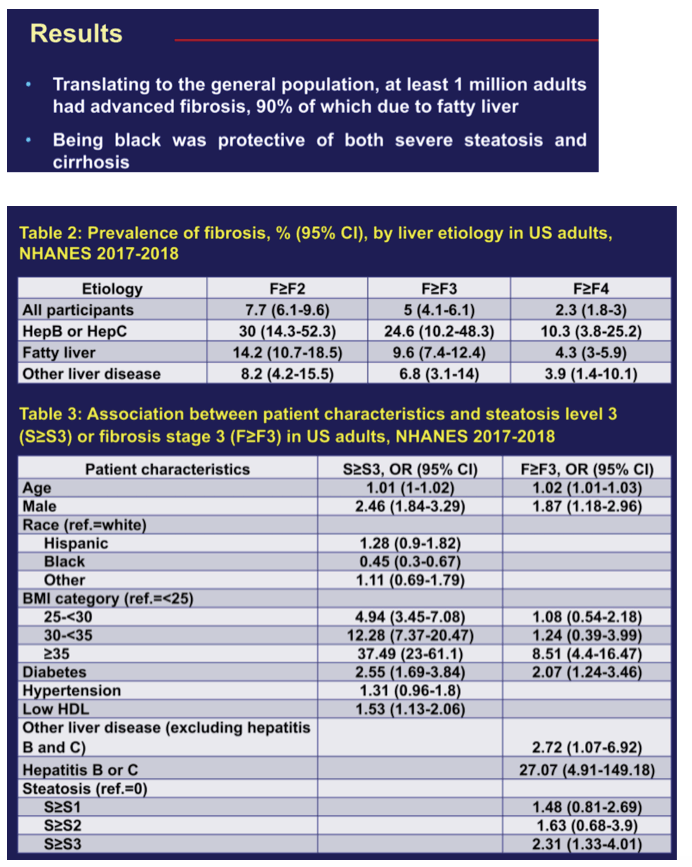 |
 |
 |
| |
PREVALENCE AND RISK FACTORS OF HEPATIC STEATOSIS AND FIBROSIS IN AMERICAN ADULTS: A POPULATION-BASED STUDY
|
| |
| |
AASLD 2020 Nov 11-16

Phuc Le1, Michael Rothberg1, Samer Gawrieh2, Arthur J. McCullough1, Mazen Noureddin3 and Naim Alkhouri4, (1)Cleveland Clinic, (2)Indiana University, (3)Division of Digestive and Liver Diseases, Cedars-Sinai Medical Center, (4)UT Health San Antonio
Background: Cirrhosis is a leading cause of morbidity and mortality in the U.S. With the rising prevalence of obesity, the current burden of steatosis and fibrosis associated with chronic liver diseases in US adults has not been defined in population-based studies. Using vibration controlled transient elastography (VCTE), we estimated the prevalence and identified risk factors of steatosis and fibrosis among the general U.S. adults.
Methods: We conducted a cross- sectional, retrospective analysis using 2017-2018 National Health and Nutrition Examination Survey data. We included adults aged ≥18 years and excluded pregnant women and those with incomplete exam. We defined steatosis based on the median controlled attenuation parameter (CAP) score of ≥274 dB/m for steatosis level 1 (S1) (≥5% fat), ≥290 dB/m for S2 (≥34% fat), and ≥302 dB/m for S3 (≥67% fat). For median stiffness score, we applied a cutoff of ≥8.2 kPa for fibrosis stage 2 (F2), ≥9.7 kPa for F3, and ≥13.6 kPa for cirrhosis or F4 . The prevalence of steatosis were estimated for the whole population. The prevalence of fibrosis was calculated by liver etiology: hepatitis B or C, fatty liver (≥5% liver fat), and other liver diseases (participants ever told to have any liver condition). All prevalence rates were age-adjusted. We used multiple logistic regression to identify risk factors associated with S≥S3 and F≥F3. P-value < 0.05 was considered statistically significant. The complex survey design was accounted for in all analyses.
Results: The final sample included 4,746 adults, representing >217 million persons. Mean age was 47 years, 49% were male, and mean BMI was 29 .4 kg/m2 . The age-adjusted prevalence of steatosis ≥S1, ≥S2, and ≥S3 was 41%, 32% and 26%, respectively. The age-adjusted prevalence of F≥F3 was 5% in the entire population (95% CI, 4.1-6.1%), 25% in patients with hepatitis B or C, 10% in patients with fatty liver, and 7% in patients with other liver diseases. Translating to the general population, at least 11 million adults had advanced fibrosis, 90% of which was due to fatty liver. Age, male, BMI≥30, diabetes, and low HDL were associated with having S≥S3. Age, male, BMI≥35, diabetes, hepatitis B or C, other liver disease, and steatosis ≥67% were associated with having F≥F3. Being Black was protective of both severe steatosis and advanced fibrosis.
Conclusion: Steatosis (≥5% liver fat) is widespread among U.S. adults. Almost 1 in 4 patients with hepatitis B or C and 1 in 10 patients with fatty liver had advanced fibrosis.



|
| |
|
 |
 |
|
|